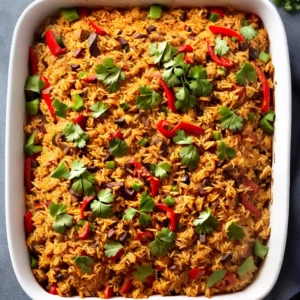How Much Rice Per Person
Wondering how much rice per person to cook? Look no further! This measurement conversion guide will ensure that everyone at your table is satisfied with their portion of rice.
How Much Rice Per Person – Key Takeaways:
- For a side dish, use ¼ cup of uncooked rice per person. For a main course, use ½ cup of uncooked rice per person.
- Adjust the portions based on appetite and potential leftovers.
- Follow the directions on the rice package for the amount of water to add when cooking.
- Use measuring cups or a kitchen scale to accurately portion the rice.
- Cooked rice roughly doubles in volume and weight, so one cup of uncooked rice yields about two cups of cooked rice.
Determining Portion Sizes for Rice
Before diving into the specifics, it’s essential to understand the different ways in which rice can be measured, whether by weight or volume, and the distinction between uncooked and cooked measurements. When it comes to cooking rice, precise measurements are crucial to ensure perfect results. Let’s explore the various methods and considerations for determining portion sizes.
When measuring rice, you can use either weight or volume. Weight measurements are more accurate, especially when using different types of rice with varying densities. A kitchen scale is an excellent tool for this purpose. On the other hand, volume measurements, such as cups, are more common in everyday cooking. It’s important to note that different types of rice may yield different weights and volumes.
To determine portion sizes, it’s important to understand the difference between uncooked and cooked rice. Uncooked rice takes up less space and weighs less than its cooked counterpart. As a general guideline, one cup of uncooked rice will yield about two cups of cooked rice. This ratio can vary depending on the type of rice and the cooking method used.
| Type of Rice | Cups of Uncooked Rice | Approximate Cooked Rice Yield |
|---|---|---|
| Long-Grain White Rice | 1 cup | 2 cups |
| Brown Rice | 1 cup | 2 1/2 cups |
| Basmati Rice | 1 cup | 2 1/4 cups |
| Jasmine Rice | 1 cup | 2 cups |
It’s important to note that these measurements are just guidelines. The amount of rice you cook may vary depending on factors such as the appetites of those you are serving and whether you anticipate leftovers. Adjust the portion sizes accordingly to suit your needs and preferences.
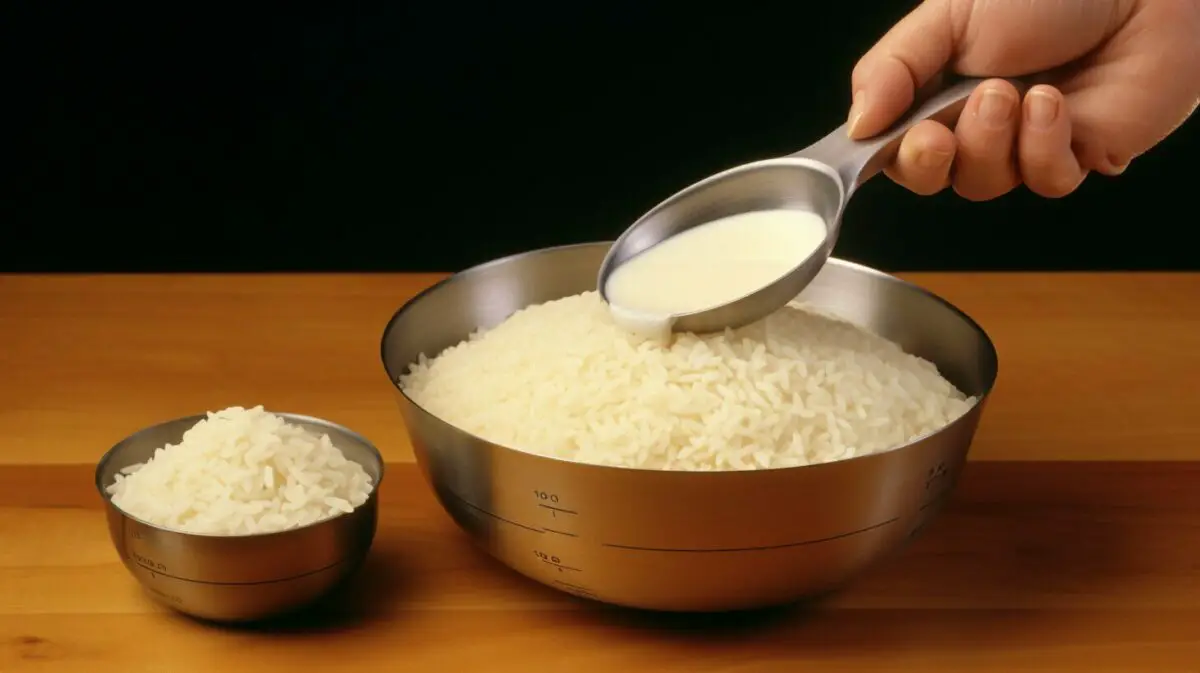
- Use measuring cups or a kitchen scale for accurate measurements.
- Consider the type of rice and its cooked yield when determining portion sizes.
- Adjust the amount of rice based on the appetites of those you are serving and the likelihood of leftovers.
With these guidelines in mind, you can confidently measure the perfect amount of rice for your meals, ensuring everyone is satisfied. Next, we’ll explore recommended portion sizes for different types of recipes and discuss how to adjust them accordingly.
Recommended Portion Sizes
As a master chef, I recommend using these general guidelines for portioning rice per person, considering whether it’s a side dish or the main event, and making necessary adjustments based on specific circumstances. For a side dish, it is recommended to use ¼ cup of uncooked rice per person. This amount is perfect for accompanying other dishes and provides a satisfying portion without overwhelming the meal. On the other hand, if rice is the main course, it is recommended to use ½ cup of uncooked rice per person. This larger portion ensures that everyone gets enough to satisfy their hunger.
These recommended portion sizes are a great starting point, but it’s important to remember that everyone’s appetite is different, and there may be other factors to consider. If you’re serving a group with hearty appetites or if you want to have leftovers for another meal, you can adjust the portion sizes accordingly. It’s always better to have a little extra than not enough!
Adjusting Portion Sizes for Specific Recipes
When it comes to specific recipes where rice plays a significant role or serves as a key ingredient, it’s essential to adjust the portion sizes accordingly. Some dishes, like a hearty rice casserole or a flavorful rice pilaf, may require more than the standard serving to achieve the desired taste and texture. These recipes often incorporate additional ingredients and spices that complement the rice, making it the star of the dish. Be sure to follow the recipe instructions carefully to ensure that you’re using the right amount of rice for the best results.
To help you visualize the recommended portion sizes, here’s a handy table that shows the equivalent measurements for uncooked and cooked rice:
| Number of People | Uncooked Rice (cups) | Cooked Rice (cups) |
|---|---|---|
| 1 | ¼ | ½ |
| 2 | ½ | 1 |
| 3 | ¾ | 1 ½ |
| 4 | 1 | 2 |
Remember, these measurements are just a starting point, and you can always adjust them based on your needs and preferences. When in doubt, it’s always better to have a bit more rice than not enough!
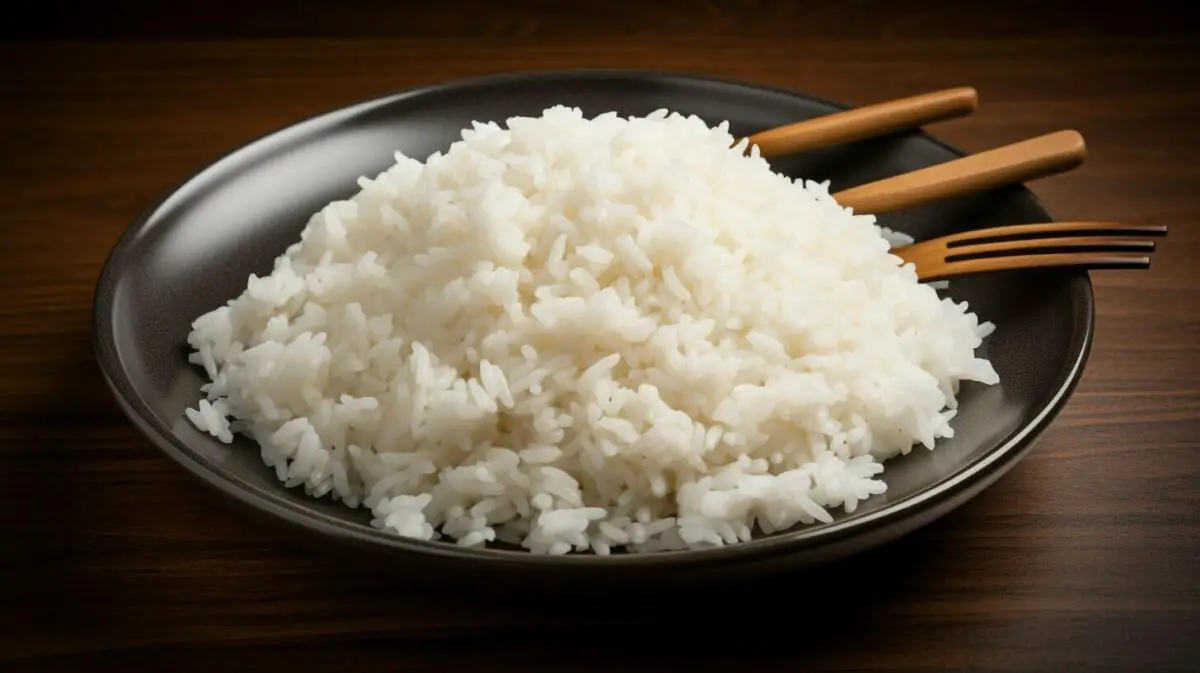
To ensure precise portioning of rice, it’s essential to have the right measuring tools in your kitchen arsenal, such as measuring cups or a reliable kitchen scale. These tools will help you accurately measure the amount of rice you need, whether it’s for a side dish or a main course. Measuring cups are great for measuring rice by volume, while a kitchen scale can provide you with the exact weight of the rice.
Measuring cups come in different sizes and are labeled with measurements in cups, allowing you to easily measure the desired amount of rice. They are particularly useful for recipes that call for a specific volume of rice, as you can simply scoop the rice into the measuring cup and level it off to ensure an accurate measurement. A kitchen scale, on the other hand, provides precise measurements in grams or ounces, which is especially useful if you prefer to measure rice by weight rather than volume. This can be particularly important when following recipes that require precise ratios and proportions.
If you’re unsure which measuring method to use, remember that 1 cup of uncooked rice typically yields about 2 cups of cooked rice, so keep that in mind when determining portion sizes.
Another useful tool to have on hand is a conversion chart or calculator. These handy references can help you convert measurements between cups, grams, and ounces, ensuring you have the correct portion sizes for your recipe. They can be particularly helpful if you’re working with a recipe that uses different measurement units than what you’re accustomed to.
By using the right measuring tools, you can ensure that your rice dishes turn out perfectly portioned every time. So, be sure to stock your kitchen with measuring cups, a kitchen scale, and any other conversion references you may need. With these tools at your disposal, you’ll be able to confidently measure the right amount of rice for your meals, resulting in delicious and satisfying dishes.
Table: Measurement Equivalents
| Measurement | Equivalent |
|---|---|
| 1 cup (uncooked rice) | 2 cups (cooked rice) |
| 1 cup (uncooked rice) | 175 grams |
| 1 cup (uncooked rice) | 6.2 ounces |
| 1 gram | 0.0057 cups (uncooked rice) |
| 1 ounce | 0.0277 cups (uncooked rice) |
Using the right measuring tools and having access to conversion references can take the guesswork out of portioning your rice. With practice, you’ll become more comfortable and confident in measuring the perfect amount of rice for any recipe. So, get cooking and enjoy your perfectly portioned rice dishes!
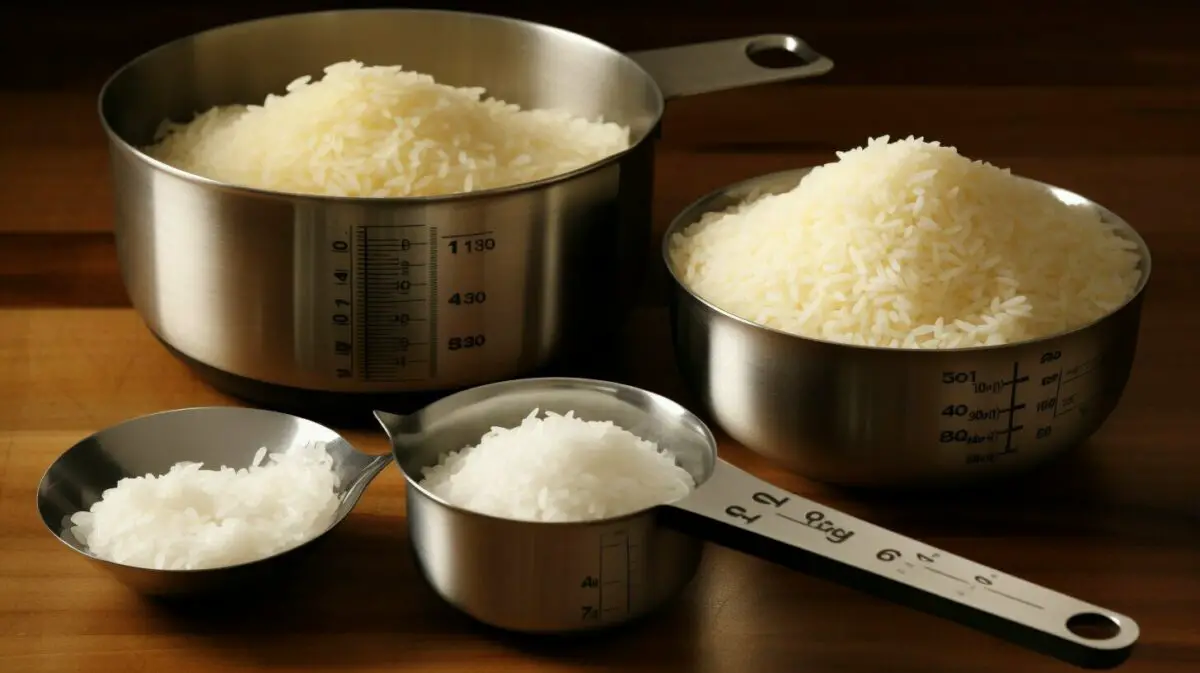
It’s essential to understand the conversion process for uncooked rice to cooked rice, as it can affect the overall portion sizes. Keep in mind that different rice types also have varying absorption rates, impacting the water-to-rice ratio.
When cooking rice, it is important to follow the directions on the rice package regarding the amount of water to add. This is because different rice varieties, such as long-grain, short-grain, brown rice, white rice, basmati, and jasmine, have different absorption rates. For example, long-grain rice tends to have a lower absorption rate than short-grain rice, meaning it requires less water during cooking.
To give you an idea of how rice expands when cooked, a general rule of thumb is that one cup of uncooked rice will yield about two cups of cooked rice. This can vary slightly depending on the type of rice and the cooking method used. However, it is always a good idea to check the specific instructions on the rice package for the most accurate measurements.
| Rice Type | Water-to-Rice Ratio |
|---|---|
| Long-Grain Rice | 1 ¾ cups water per 1 cup rice |
| Short-Grain Rice | 1 ½ cups water per 1 cup rice |
| Brown Rice | 2 cups water per 1 cup rice |
| Basmati Rice | 1 ½ cups water per 1 cup rice |
| Jasmine Rice | 1 ¾ cups water per 1 cup rice |
Remember, these ratios are just a starting point, and you can adjust them based on personal preferences or the specific recipe you are following. It’s also essential to consider whether rice is being served as a side dish or as the main course, as the recommended portion sizes will vary. Whether you’re cooking for a small gathering or a large family, understanding the conversion process and water-to-rice ratios will help you achieve perfectly cooked rice every time.
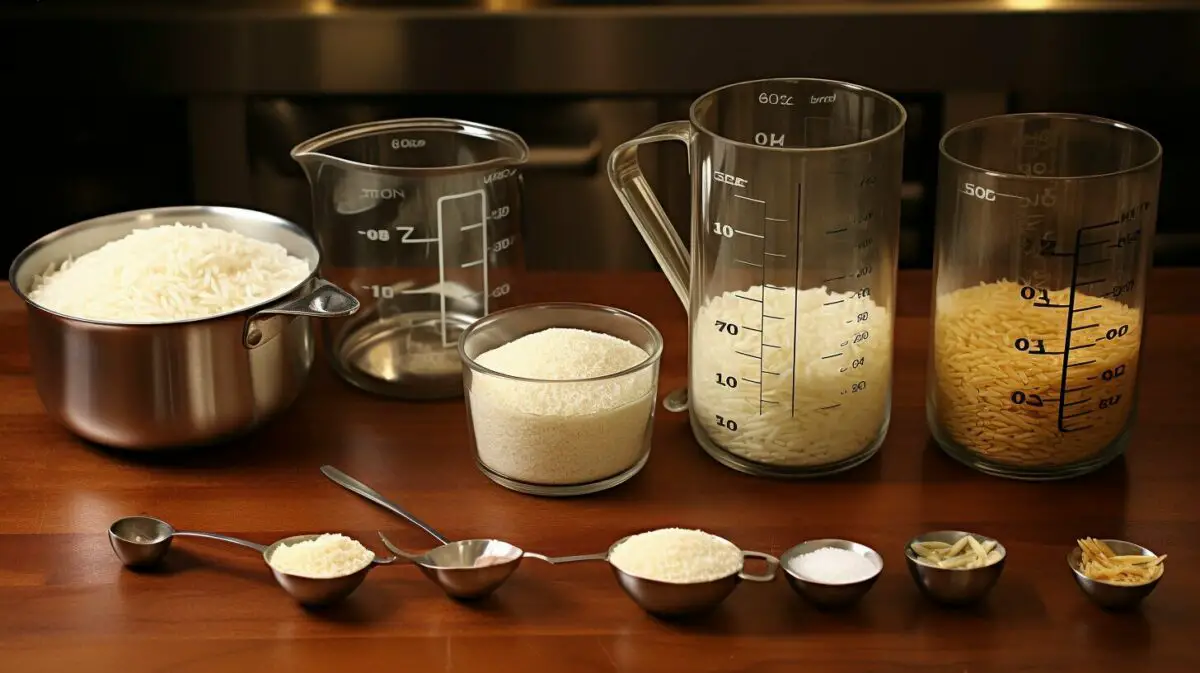
- Understanding the conversion process for uncooked to cooked rice is crucial for determining portion sizes.
- Different rice types have varying absorption rates, impacting the water-to-rice ratio.
- Follow the instructions on the rice package for the most accurate measurements.
- General rule of thumb: 1 cup uncooked rice yields about 2 cups cooked rice.
- Adjust water-to-rice ratios based on personal preferences and recipe requirements.
With this knowledge, you’ll be able to confidently cook the perfect amount of rice for any occasion, ensuring everyone gets their fair share of this versatile and delicious staple.
Adjusting Portion Sizes for Specific Recipes
When rice takes on a crucial role in a recipe or serves as the star of the dish, it’s crucial to adjust the portion sizes accordingly to ensure the perfect balance of flavors and textures. The amount of rice required may vary depending on the specific recipe and the desired outcome. Here are some tips and considerations for adjusting portion sizes for specific recipes:
- Recipe Measurements: Before starting, carefully read through the recipe and determine how much rice is needed. Pay attention to whether the recipe calls for uncooked or cooked rice, as this will impact the portion sizes.
- Rice Types: Different rice varieties have different cooking properties and flavors. Consider the type of rice recommended in the recipe and adjust the portion sizes accordingly. For example, short-grain rice tends to be stickier and may require a larger portion to achieve the desired texture.
- Key Ingredient: If the recipe heavily relies on rice as a key ingredient, it’s important to ensure that there is enough rice to create a well-balanced dish. Adjust the portion sizes accordingly and consider increasing the amount of rice to achieve the desired taste and texture.
- Main Part of the Dish: In recipes where rice serves as the main component of the dish, such as rice pilaf or risotto, it’s important to adjust the portion sizes to meet the desired serving size. Take into account the number of servings required and adjust the recipe accordingly.
Remember that these are general guidelines, and it’s always best to refer to the specific recipe for accurate measurements. By adjusting the portion sizes, you can ensure that the rice plays its intended role in the dish and enhances the overall dining experience.
Example Recipe: Chicken Fried Rice
Let’s take an example recipe for Chicken Fried Rice to illustrate how adjusting portion sizes can make a difference. In this recipe, rice serves as the main part of the dish, and it’s important to have the right balance of ingredients for a flavorful and satisfying meal.
| Ingredients | Portion for 2 servings | Portion for 4 servings |
|---|---|---|
| Uncooked white rice | 1 cup | 2 cups |
| Chicken breast, cooked and diced | 1/2 cup | 1 cup |
| Frozen mixed vegetables | 1/2 cup | 1 cup |
| Eggs, beaten | 1 | 2 |
| Soy sauce | 2 tablespoons | 4 tablespoons |
| Sesame oil | 1 teaspoon | 2 teaspoons |
| Salt and pepper | To taste | To taste |
By adjusting the portion sizes based on the number of servings required, you can ensure that each serving of Chicken Fried Rice has the perfect balance of rice, chicken, vegetables, and seasonings.

With these considerations in mind, you’ll be able to adjust the portion sizes of rice in your recipes and create delicious meals that will satisfy your taste buds.
Storing Leftover Rice
When dealing with leftover rice, proper storage techniques are essential to maintain its freshness and ensure it can be enjoyed later. Cooling the rice before storing it is crucial to prevent bacterial growth. Once the rice has cooled down, transfer it to an airtight container to prevent moisture and air from affecting its texture and taste. For optimal results, place the airtight container in the refrigerator or freezer.
Storing leftover rice in the refrigerator can help extend its shelf life for up to four to six days. However, it is important to note that rice tends to dry out over time in the fridge, so adding a splash of water or broth when reheating can help restore its moisture. If you plan on storing the rice for a longer period, freezing is a great option. Frozen rice can last for several months, but it is crucial to package it properly to avoid freezer burn.
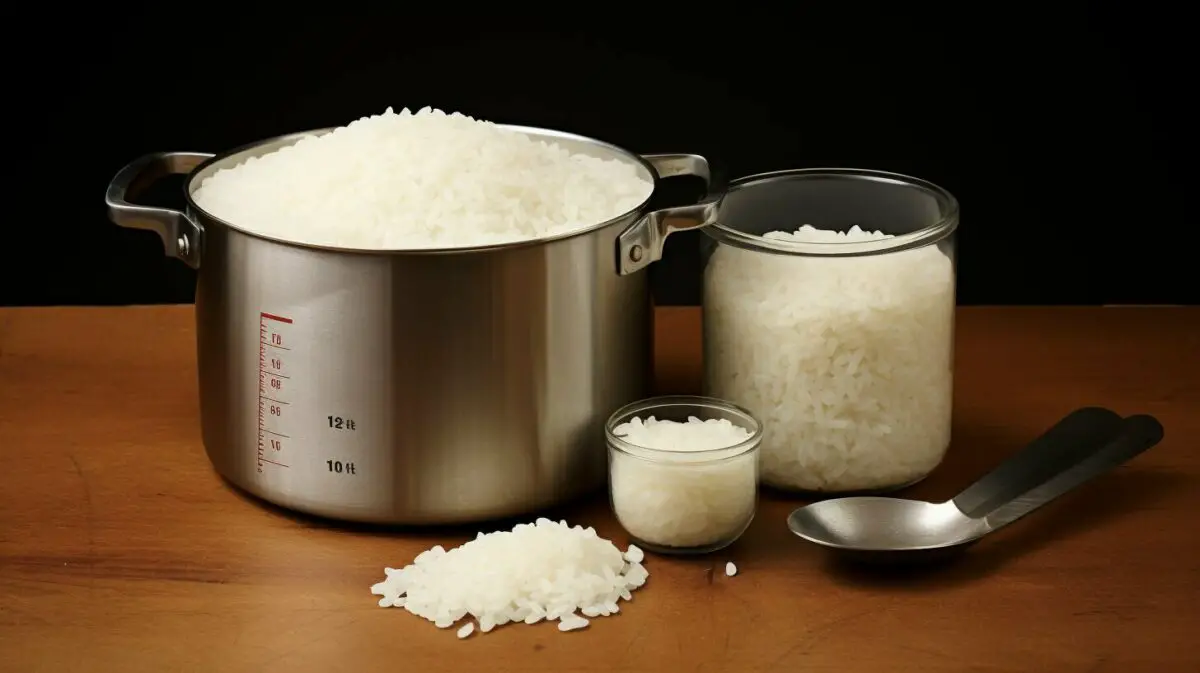
Storing Leftover Rice: Best Practices
- Cool the rice before transferring it to an airtight container.
- Use an airtight container to prevent moisture and air exposure.
- Store in the refrigerator for up to four to six days.
- Reheat refrigerated rice by adding a splash of water or broth.
- For longer-term storage, freeze the rice in a freezer-safe container.
- Ensure proper packaging to avoid freezer burn.
By following these storage guidelines, you can enjoy leftover rice without compromising its taste and quality. Whether you plan to use it as a side dish or incorporate it into another recipe, properly stored rice will maintain its texture and flavor, allowing you to minimize food waste and save time in the kitchen.
Reheating Leftover Rice
Reheating leftover rice is a breeze with these simple steps that will restore its delicious taste and texture in no time. Whether you have some leftover rice from last night’s dinner or you want to make a quick rice dish using already cooked rice, follow these instructions to enjoy a satisfying meal without any hassle.
To begin, place the desired amount of leftover rice in a microwave-safe container. Add a couple of tablespoons of water to the rice to prevent it from drying out during the reheating process. The water will create steam, helping to keep the rice moist and fluffy.
Tip: Adding a touch of water to the rice can make a significant difference in its taste and texture when reheated. It’s a simple trick that can elevate your leftover rice experience.
Cover the container with a microwave-safe lid or microwave-safe plastic wrap, leaving a small vent for the steam to escape. Set the microwave to medium heat and reheat the rice for one to two minutes. Check the rice and stir it gently to distribute the heat evenly. If needed, continue reheating in 30-second intervals until the rice reaches your desired temperature.
Once the rice is heated through, carefully remove it from the microwave and let it sit for a minute or two. This resting time allows the rice to absorb any remaining steam, ensuring it stays moist and fluffy.
Now, your reheated rice is ready to be enjoyed as a side dish or as the main part of a flavorful recipe. Add your favorite toppings, sauces, or proteins to create a delicious and satisfying meal in no time.

As a master chef, I’ve learned a few tricks of the trade when it comes to perfect rice portioning. Follow these expert tips to ensure everyone at your table is satisfied.
1. Determine the type of rice: Different types of rice have varying sizes and cooking characteristics. For example, long-grain rice tends to be fluffy and separate when cooked, while short-grain rice becomes stickier. Consider the recipe and the desired texture to determine the ideal portion size.
2. Consider the appetite: Take into account the appetites of the people you are serving. Some individuals might prefer larger portions, while others might be satisfied with smaller ones. Adjust the portion sizes accordingly to cater to everyone’s needs.
3. Factor in potential leftovers: If you’re cooking for a smaller group or anticipate having leftovers, it’s a good idea to make extra rice. Leftover rice can be used for various dishes like fried rice or rice salads. Use your judgment to determine how much extra to cook, ensuring you don’t waste any food.
4. Utilize measuring tools: Measuring cups or a kitchen scale can be your best friends when it comes to accurately portioning rice. Use them to measure the uncooked rice according to your desired portion size. Remember, one cup of uncooked rice roughly yields two cups of cooked rice.
5. Adjust for specific recipes: Some recipes require more rice than the standard serving size. For example, when making sushi rolls, you might need a larger portion of rice as it serves as the main part of the dish. Be flexible and adjust the portion sizes based on the specific recipe you’re preparing.
By following these expert tips for perfect rice portioning, you can ensure that your rice dishes are both delicious and satisfying. Remember to be mindful of appetites, adjust for potential leftovers, and utilize measuring tools for accurate portioning. Whether you’re cooking a side dish or a rice-based recipe, these tips will help you achieve rice perfection every time.
The Benefits of Proper Rice Portioning
Proper rice portioning goes beyond just the numbers – it can have numerous benefits, from reducing food waste to creating well-balanced meals for your loved ones. By accurately measuring the amount of rice you cook, you can ensure that everyone gets their fair share without overestimating or underestimating the servings. This not only helps to avoid leftovers that may go to waste but also allows for better meal planning and portion control.
One of the key benefits of proper rice portioning is reducing food waste. When you cook too much rice, there is a higher chance of having leftovers that may end up being discarded. By measuring the right amount, you can minimize food waste and make more efficient use of ingredients. Not only is this beneficial for the environment, but it also helps to save money in the long run.
Proper rice portioning also plays a crucial role in creating well-balanced meals. By following recommended portion sizes, you can ensure that rice is not overpowering the other components of the dish. Whether you are serving rice as a side dish or as the main course, having the right amount allows for a harmonious balance of flavors and textures. Additionally, it helps to promote a healthier eating pattern by controlling portion sizes and preventing excessive calorie intake.
Ultimately, proper rice portioning contributes to a more enjoyable dining experience. When everyone has a satisfying portion of rice on their plate, it enhances the overall satisfaction of the meal. Additionally, it allows for better meal planning and portion control, ensuring that you have enough rice to serve while avoiding unnecessary leftovers. So, next time you cook rice, remember the importance of proper portioning – it’s more than just a number!
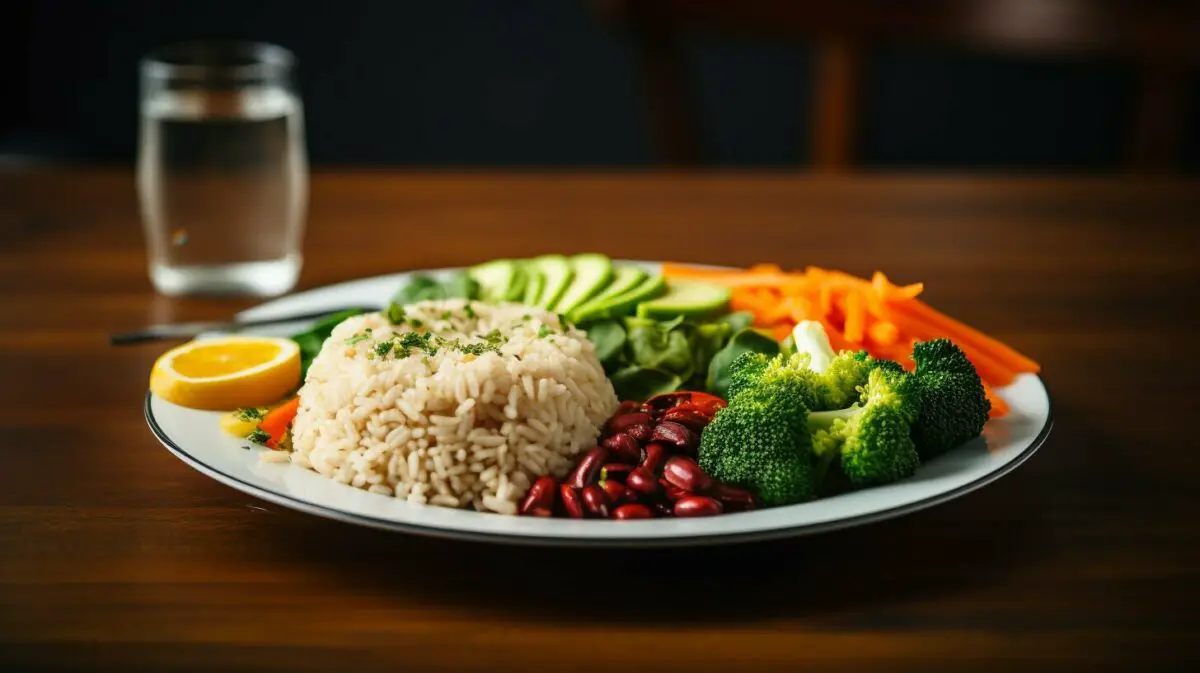
Dive into the fascinating world of rice varieties and discover how their unique characteristics affect the ideal portion sizes for each type. When it comes to cooking rice, different varieties can have different cooking properties, flavors, and textures. Understanding these variations can help you determine the perfect amount to cook for your desired dish.
Let’s start with long-grain rice, which is known for its distinct grains that stay separate when cooked. This type of rice, such as basmati or jasmine, is often used in dishes like pilaf or biryani. For long-grain rice, the ideal portion size is approximately ¾ cup of cooked rice per person. The grains are light and fluffy, allowing for a larger serving size.
On the other hand, short-grain rice, like sushi rice or Arborio rice, has a higher starch content that results in a stickier texture when cooked. Due to its denseness, the ideal portion size for short-grain rice is about ½ cup of cooked rice per person. This smaller portion allows the dish to be more filling while still delivering a satisfying mouthfeel.
| Rice Variety | Ideal Portion Size (cooked rice) |
|---|---|
| Long-Grain (e.g., basmati, jasmine) | ¾ cup |
| Short-Grain (e.g., sushi rice, Arborio rice) | ½ cup |
When exploring other rice varieties like brown rice or wild rice, it’s important to note that they have a chewier texture and a nuttier flavor compared to white rice. For these varieties, the ideal portion size is slightly larger, ranging from ¾ to 1 cup of cooked rice per person. The heartiness of these rice types calls for a more generous serving size to create a satisfying meal.
Remember, these ideal portion sizes serve as a general guideline. You can always adjust the amounts based on personal preferences, appetites, and the specific recipe you’re preparing. With a deeper understanding of rice varieties and their ideal portions, you’ll be able to create perfectly portioned rice dishes that complement your culinary creations.
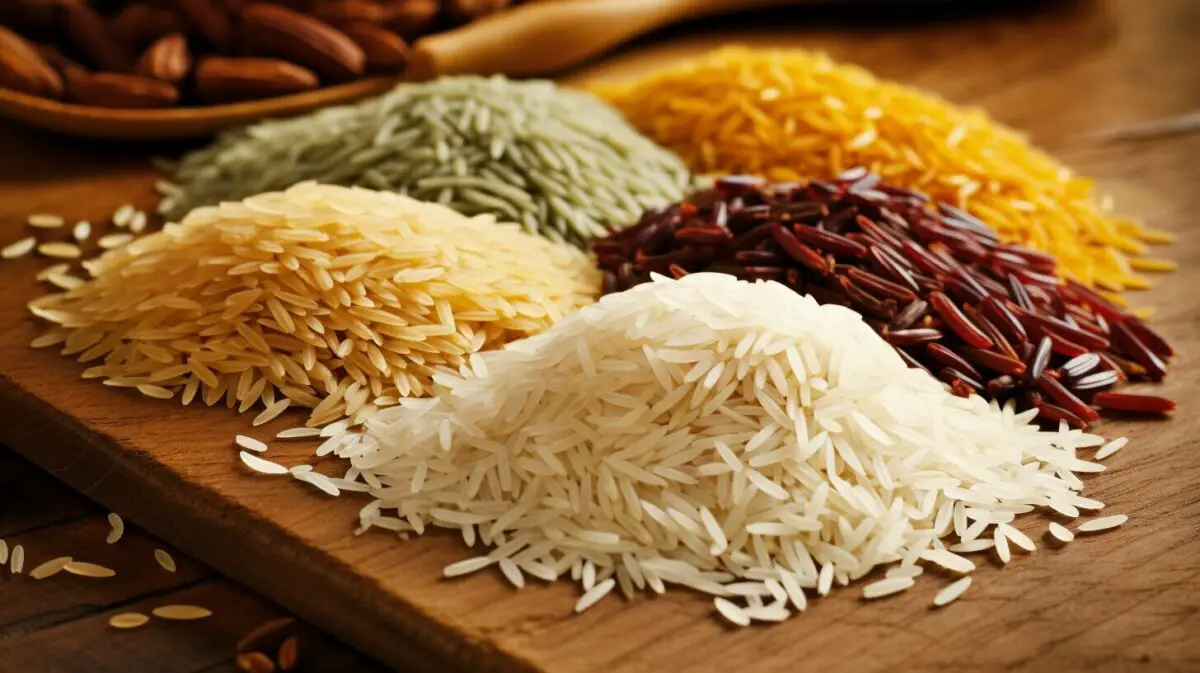
Have some burning questions about rice portioning? Check out these frequently asked questions and find the answers you seek.
- How much rice should I cook per person?
The amount of rice per person depends on whether it is being served as a side dish or as the main course. For a side dish, it is recommended to use ¼ cup of uncooked rice per person. However, if rice is the main course, it is recommended to use ½ cup of uncooked rice per person. These amounts can be adjusted based on factors such as appetite and potential leftovers.
- How do I measure rice correctly?
To measure rice accurately, it is helpful to use measuring cups or a kitchen scale. Different recipes may call for different types of measurements, such as weight or volume. One cup of uncooked rice will yield about two cups of cooked rice, as rice roughly doubles in volume and weight when cooked.
- Do different types of recipes require different portion sizes?
Yes, different types of recipes may require varying amounts of cooked rice. For recipes where rice plays a significant role or serves as a key ingredient, it is possible that more than the standard serving is needed to achieve the desired taste and texture. It is important to follow the recipe instructions for accurate portioning.
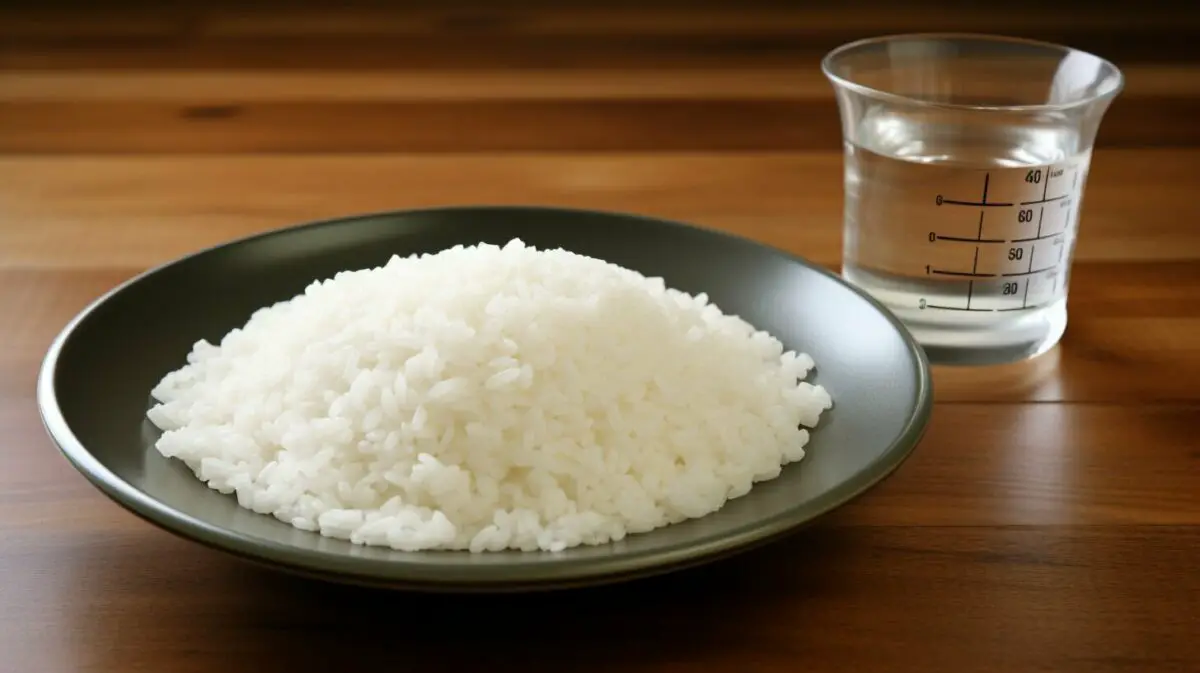
Remember to adjust the rice portion size based on the specific recipe requirements and the number of people you are serving. And don’t forget to store any leftover rice properly by cooling it and placing it in an airtight container in the refrigerator or freezer. To reheat leftover rice, simply add a couple tablespoons of water and microwave it for a quick and easy meal. Happy cooking!
Conclusion – How Much Rice Per Person
In conclusion, mastering the art of rice portioning ensures that every meal is a delightful experience, with perfectly portioned rice that satisfies both appetite and taste. When cooking rice, the amount per person will depend on whether it is being served as a side dish or as the main course. For a side dish, it is recommended to use ¼ cup of uncooked rice per person, while for a main course it is recommended to use ½ cup of uncooked rice per person.
These amounts can be adjusted based on factors such as the appetites of the eaters and whether there will be leftovers. It is also important to follow the directions on the rice package regarding the amount of water to add when cooking. When determining how much rice to cook, it is helpful to use measuring cups or a kitchen scale.
Cooked rice roughly doubles in volume and weight, so one cup of uncooked rice will yield about two cups of cooked rice. Additionally, there are variations in the recommended amount of cooked rice for different types of recipes. For example, recipes where rice is a key ingredient or a main part of the dish may require more than the standard serving.
It is also important to store leftover rice properly by cooling it and placing it in an airtight container in the refrigerator or freezer. To reheat leftover rice, simply add a couple tablespoons of water and microwave it.
FAQ – How Much Rice Per Person
Q: How much rice should I cook per person?
A: The amount of rice per person will vary depending on whether it is being served as a side dish or main course. For a side dish, it is recommended to use ¼ cup of uncooked rice per person. For a main course, it is recommended to use ½ cup of uncooked rice per person. These amounts can be adjusted based on factors such as appetite and potential leftovers.
Q: How do I measure rice?
A: Rice can be measured using either weight or volume. It is helpful to use measuring cups or a kitchen scale for accurate measurements.
Q: How much cooked rice does one cup of uncooked rice yield?
A: Cooked rice roughly doubles in volume and weight. So, one cup of uncooked rice will yield about two cups of cooked rice.
Q: Are there variations in the recommended amount of rice for different recipes?
A: Yes, there are variations in the recommended amount of cooked rice for different types of recipes. Recipes where rice is a key ingredient or a main part of the dish may require more than the standard serving.
Q: How should leftover rice be stored?
A: Leftover rice should be cooled and placed in an airtight container in the refrigerator or freezer to maintain its freshness and prevent bacterial growth.
Q: How do I reheat leftover rice?
A: To reheat leftover rice, simply add a couple tablespoons of water and microwave it until heated through.
Our Friends:
- https://www.gigacalculator.com/calculators/rice-calculator.php
- https://feelgoodfoodie.net/recipe/how-to-cook-rice/
Related Recipes:
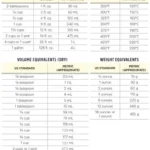 How Many Cups Are in a Liter: Unlocking the Mystery
How Many Cups Are in a Liter: Unlocking the Mystery
 How Many Cups Are in a Pint? (Perfect Measurement Conversion Guide)
How Many Cups Are in a Pint? (Perfect Measurement Conversion Guide)
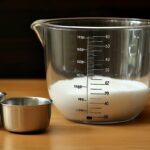 How Many Tablespoons in a Quarter Cup? (Perfect Measurement Conversion Guide)
How Many Tablespoons in a Quarter Cup? (Perfect Measurement Conversion Guide)
 How Many Cups Are in a Liter? (Perfect Measurement Conversion Guide)
How Many Cups Are in a Liter? (Perfect Measurement Conversion Guide)
 How Many Fluid Ounces in a Cup? (Perfect Measurement Conversion Guide)
How Many Fluid Ounces in a Cup? (Perfect Measurement Conversion Guide)
 How Many Ounces Are in 750 ml? (Measurement Conversion Guide)
How Many Ounces Are in 750 ml? (Measurement Conversion Guide)
 How Many Ounces in a Bottle of Wine? (Perfect Measurement Conversion Guide)
How Many Ounces in a Bottle of Wine? (Perfect Measurement Conversion Guide)
 How Many Milliliters in a Cup? (Perfect Measurement Conversion Guide)
How Many Milliliters in a Cup? (Perfect Measurement Conversion Guide)



